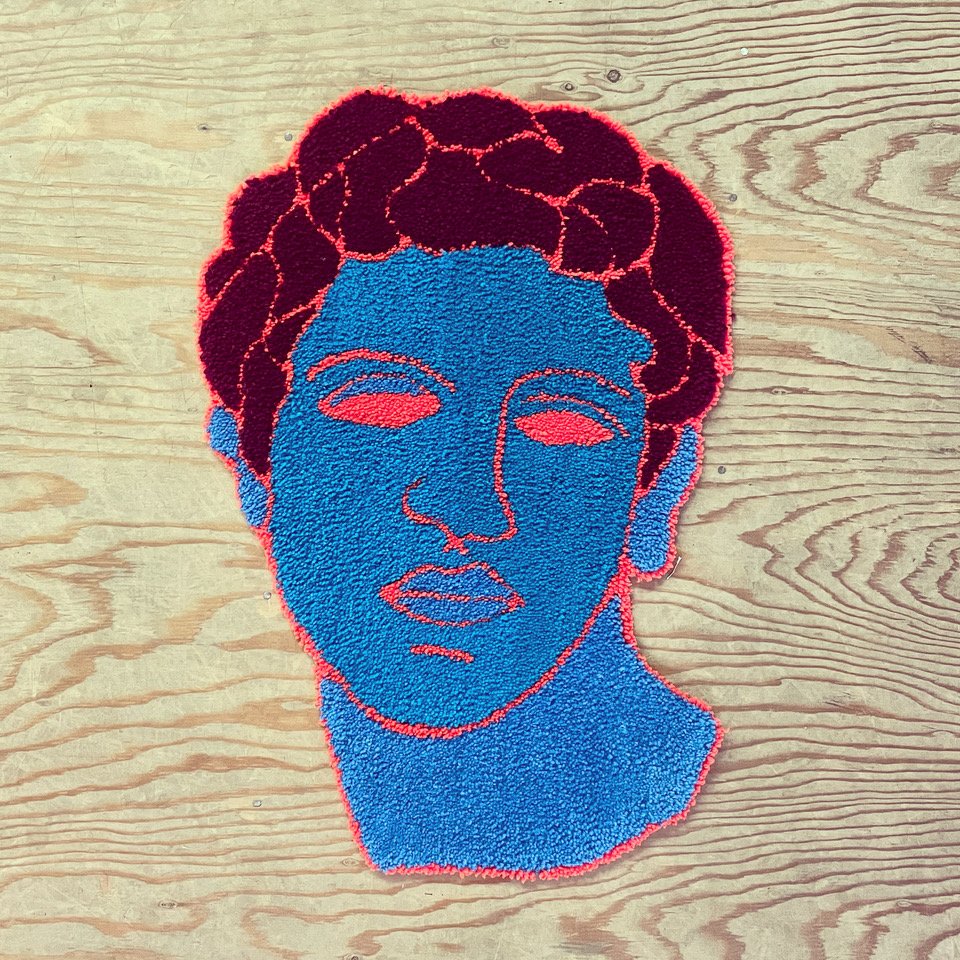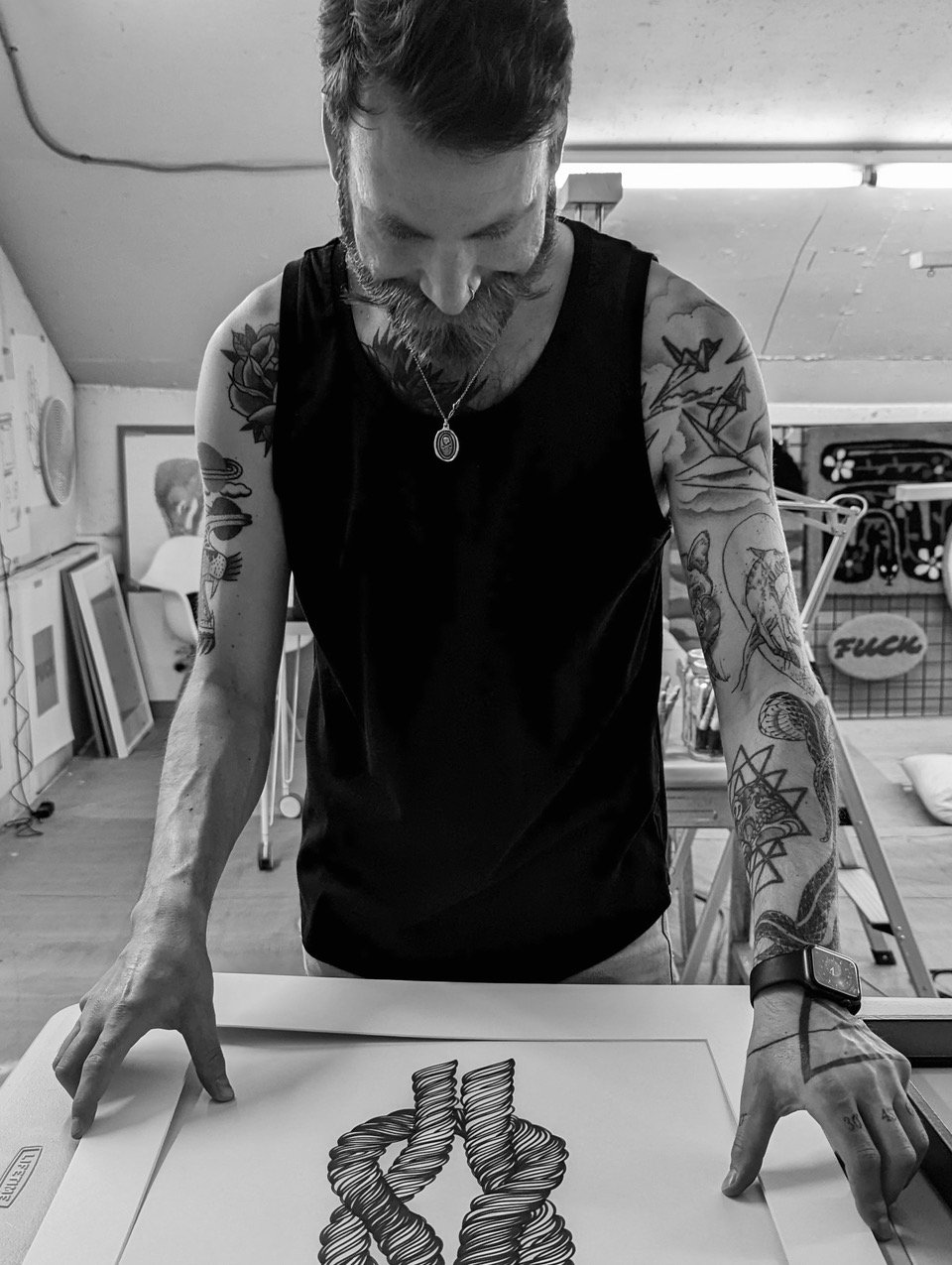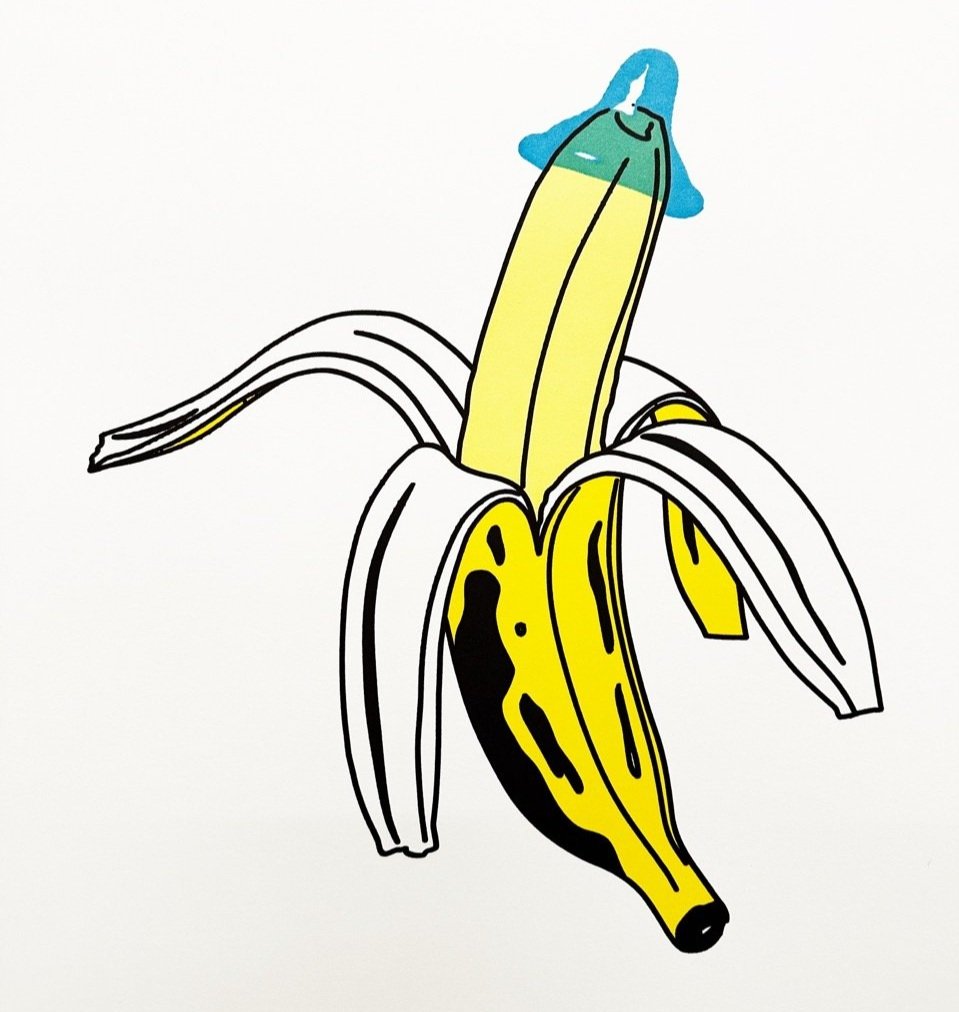The diverse facets of identity with fibre artist Wes Thom
Wes Thom
Queer Fibre Artist
Meet Wes Thom, a fibre artist whose work combines his desire to create practical art that everyone gets to enjoy. Through his work, he hopes to challenge the perspective of people and showcase the different facets of his identity. We caught up with Wes to learn about his process and his hope for his art work.
Pride In Business: Why did you choose to become a fibre art artist?
Wes Thom: I fell in love with fibre art while travelling in Europe with my partner in early 2022. Many different cultures have displayed fibre arts to beautify and warm buildings for thousands of years. I liked the idea of this functional art to provide insulation for when it is cold, absorbs extra noise in the room, traps airborne pathogens to clean the air, and provides variety in your art collection. Placing a tufted piece in a space will add the three-dimensional texture your eye loves!
PIB: Did you have any childhood experiences that shaped the way you chose to present art?
WT: I grew up in Northern Alberta in a village of 250 people, and “traditional” art supplies were not easily available. This was a huge factor about why I believe in sustainability and functionality. There is something special about creating something from what is readily available at the moment. By incorporating these principles into my art, I can create art that is both beautiful and socially responsible.
Title: Tiger Pelt
Artist: Wes Thom — Queer Fibre Artist
PIB: What attracted you towards working with the male anatomy and fibre art as an outlet?
WT: Working with the male anatomy can provide rich and complex topics for exploring themes of gender and identity. By depicting the male body in various ways, I can challenge traditional notions of masculinity and explore these complexities. I’m drawn to this because of my relationship with my own body and what being masculine means to me.
As for fibre art, functionality comes to mind. I am a huge advocate of functional art and its ability to not only beautify a space, but also serve a useful purpose. Because functional art pieces are designed to be used and enjoyed over time, they can be seen as a more sustainable and eco-friendly option than purely decorative art.
PIB: In your print work, there is a lot of fetish gear (jockstrap, harness, etc), what made you choose to present these types of gear in a more artistic way?
WT: Displaying these taboo items and topics in art can be an important way to raise awareness, challenge conventions, promote empathy, and encourage dialogue about important issues. By pushing the boundaries of what is acceptable, I can create a space for reflection and understanding, helping to promote social change and a more inclusive society.
Title: EW David
Artist: Wes Thom — Queer Fibre Artist
PIB: What are the different themes you are exploring with your print work?
WT: My goal for the prints is to creatively challenge myself while providing affordability and sustainability. I would like to release up to three new creations a week ranging on different themes and topics, all printed in the studio. Some subjects I’ve visited in the past are: Illusions, body forms, florals, and new worlds. What am I currently working on? I suppose you’ll have to tune in on Instagram (@artbythomni) and find out.
Wes Thom
Queer Fibre Artist
PIB: How do you incorporate your native heritage in your work?
WT: I like drawing inspiration from traditional art forms, patterns, and motifs, as well as incorporating elements of nature and the use of colour in my works. As I explore my aboriginal heritage, I would like to include more traditional materials in a more modern way.
PIB: Why is it important for you to show a diversity of body type in your work?
WT: Artwork has the power to shape our perception of beauty and the “ideal” body type. When we only see a narrow range of body types depicted in art, it can reinforce harmful and unrealistic beauty standards, leading to body dissatisfaction, negative self-image, and a range of mental health issues. By showing a diversity of body types in my artwork, I can challenge these narrow beauty standards and promote body positivity and acceptance.
Title: Illusions
Artist: Wes Thom — Queer Artist
PIB: Who are some artists who have influenced or inspired you in your work?
WT: My Aunt Janet was a huge influence growing up, she was always drawing in her sketchbook. I remember stealing her drawings late at night to look at them under my blankets with a flashlight. Now, she’s one of my number one fans and the feeling is mutual. If I had to choose someone everyone would know, Dali. I would love to live in the worlds that he creates.
Title: Dali Clock Portal
Artist: Wes Thom — Queer Artist
PIB: What would be the legacy you hope for with your work?
WT: Leaving a legacy of art by making it affordable and functional can be a powerful way to ensure that my creations will have a lasting impact and be accessible to a wider audience. By combining aesthetics with practicality and accessibility, I am creating pieces that people can appreciate and enjoy for years to come.
PIB: What is the message you want people to retain as view your art?
WT: Just like a toy box contains a variety of toys, our identity is made up of different aspects that come together to form a cohesive whole. These aspects can include our personality traits, values, beliefs, experiences, relationships, and more. Just as a toy box may contain toys of different colours, shapes, sizes, and functions, our identity may be made up of various components that differ in their importance, relevance, and impact on our sense of self.
Similarly, just as we can choose which toys we want to play with and which ones we want to put away, we have some degree of control over how we express and embody our identity. We may choose to emphasize certain aspects of ourselves in different situations or with different people, just as we may choose to play with different toys depending on our mood, interests, or social context.
Moreover, just as a toy box may change over time as we acquire new toys and discard old ones, our identity may evolve and transform as we grow and learn from our experiences. We may discover new parts of ourselves that we didn't know existed, or let go of aspects that no longer serve us. And just as some toys may hold special sentimental value or evoke strong emotions, certain parts of our identity may hold a special significance or emotional attachment for us.
Title: Banana With Hat
Artist: Wes Thom — Queer Artist
If you want to see more of Wes Thom work or to get in touch with him:
Website: thomni.com
Facebook: @artbythomni
Instagram: @artbythomni
ABOUT THE AUTHOR
Simon Trudel-Lachance
PIB — Sponsorship & Membership coordinator / Content Writer
Pride In Business article in partnership with TD.
By Simon Trudel-Lachance








